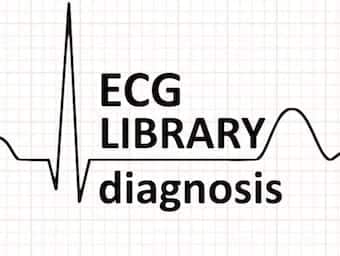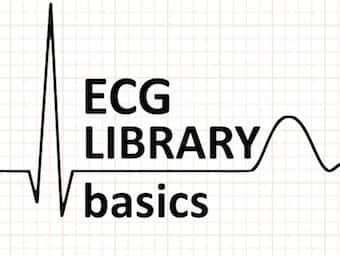
Osborn Wave (J Wave)
The Osborn wave (J wave) is a positive deflection at the J point (negative in aVR and V1). It is usually most prominent in the precordial leads and most commonly associated with hypothermia.

The Osborn wave (J wave) is a positive deflection at the J point (negative in aVR and V1). It is usually most prominent in the precordial leads and most commonly associated with hypothermia.

ECG lead positioning. V4R, right sided ECG, Lewis lead, 3-lead, 5-lead, 12-lead ECG and electrode placement on chest and limbs

ECG Axis. Hexaxial QRS Axis analysis for dummies. Quick and easy method of estimating ECG axis with worked examples and differential diagnoses

An important rhythm distinction between ventricular (VT) or supraventricular (SVT with aberrancy) this will influence your patient management

ST segment is the flat section of the ECG between end of S and start of the T wave between ventricular depolarization and repolarization EKG

Misplacement of V1 and V2: Don’t let this mistake mess up your ECG interpretation! Manifesting with P wave, Q wave, T wave changes and Brugada II pattern

EKG differential diagnosis. Differentials based on specific ECG findings. Book: ECGs for the Emergency Physician 1 and 2; LITFL ECG Library

Assessment, interpretation of ECG Conduction Blocks including first-degree, second-degree, third-degree, fascicular blocks - ECG Library

Biatrial enlargement is diagnosed when criteria for both right and left atrial enlargement are present on the same ECG - EKG Library LITFL

Brief description of right atrial enlargement (P pulmonale) including ECG criteria for diagnosis and list of causes - EKG Library LITFL

Review of the EKG features of left atrial enlargement (LAE) aka Left atrial hypertrophy (LAH) - ECG Library LITFL. P mitrale

Narrow and broad/Wide QRS complex morphology Low/high voltage QRS, differential diagnosis, causes and spot diagnosis on LITFL ECG library